“Produce great content.” No doubt you’ve heard this phrase over and over again as content marketers bask in the sun of Google’s animal algorithm updates. You’ve probably even heard it from me.
But what is great content? It’s a dreadfully fuzzy term that often disintegrates into a less that satisfactory ‘I know it when I see it’ explanation. Maybe our focus on great is misplaced.
Instead of creating great content, create memorable content.
Recall
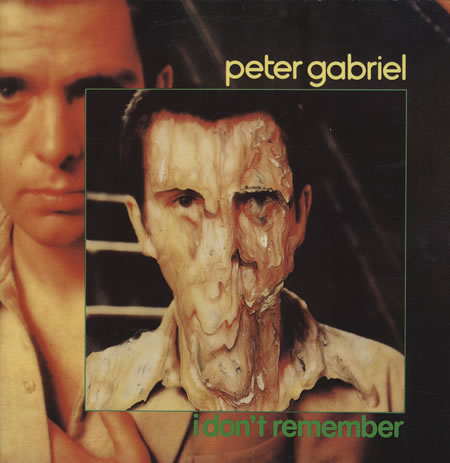
The definition of recall is fairly straightforward.
A measure of advertising effectiveness in which a sample of respondents is exposed to an ad and then at a later point in time is asked if they remember the ad. Ad recall can be on an aided or unaided basis. Aided ad recall is when the respondent is told the name of the brand or category being advertised.
Advertisers are keen on recall because it’s a measure of mind share and true reach. It doesn’t matter (as much) if your ad was seen by millions of people if no one really remembers it. Particularly if they can’t connect that ad to your brand.
Ads are just another form of content. So shouldn’t content recall work the same way?
Memorable Content
Online, we can’t easily identify those who saw a specific piece of content and then ask them whether they recall it two weeks later. (Though that’s an interesting little product idea.)
Yet, the absence of this data doesn’t mean we can’t begin to think about what type of content is memorable. Bill Sebald wrote something that struck a chord for me recently.
These “21 ways” and “1001 ways” and “top 10 ways” type SEO posts are too overwhelming.How about “my most successful tip, and here’s why.”
— Bill Sebald (@billsebald) August 20, 2012
I tweeted that out after reading another “top x link building tactics” list. A fluffy, chewed up piece of tactics we’ve all seen before. It didn’t claim to be written for beginners – which would have at least described the intended action of the content – but it was just more noise that wasn’t helpful for a reasonably experienced SEO. It was also praised in the comments and shared quite a bit … but so are the annual “SEO is dead” posts, and I’ve yet to find a new takeaway from that topic either.
I shared this post with a headline of ‘124 Reasons This Post Could Save the Internet in 7 Seconds‘. Because I’m tired of these cookie-cutter posts too.
Mind you, we see them because they do well by some measures. I’d argue it’s because of the perceived value and not the real value. Too often we think more is better. So getting 96 tips must be hugely valuable right?
I believe very few of those tips are actually read. People aren’t going to read all of them so they scan and maybe they think a few are good. But how many are really remembered?
I suppose you could argue that this shotgun method ensures that some of the tips are found. Users simply cherry-pick the ones that matter to them. But that’s a lot of work for the user. Instead, the Paradox of Choice kicks in, people decide not to engage at all and it gets sent to some read-it-later hell where it collects dust until it’s ultimately deleted or succumbs to bit rot.
Those long list of posts may get you kudos but I think it’s a ‘I should think this is awesome so I’ll say it is awesome’ type of reaction. Maybe that’s okay for you, but it isn’t for me.
Because it speaks to the real problem with this kind of content. If you didn’t read it you’re not going to remember it.
Can you honestly recall that specific list versus another one? How often are you trying to find a list of content you saw a few months ago?
Reading Is Fundamental
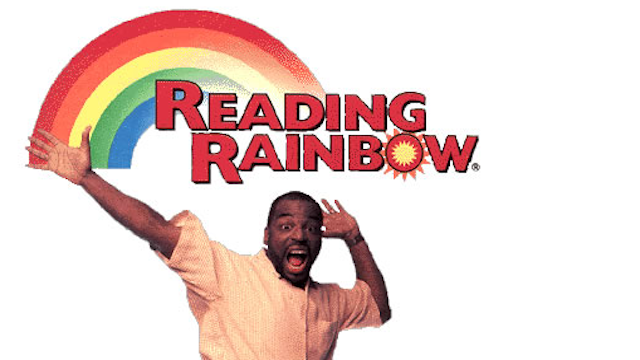
The first obstacle to memorable content is getting it read. You can’t remember something if you haven’t read and understood it.
While there’s certainly a component of reach involved (getting people to the content), I’m more concerned with whether those who actually view the content are truly reading and comprehending it.
That’s why readability is so critical. Making your content more accessible – more scannable – actually helps it get read. They might not read it word for word, but you’ll increase the chance of them reading important passages that will stick.
This excerpt on why we mangle quotes shows how the brain craves readability.
Our brains really like fluency, or the experience of cognitive ease (as opposed to cognitive strain) in taking in and retrieving information. The more fluent the experience of reading a quote—or the easier it is to grasp, the smoother it sounds, the more readily it comes to mind—the less likely we are to question the actual quotation. Those right-sounding misquotes are just taking that tendency to the next step: cleaning up, so to speak, quotations so that they are more mellifluous, more all-around quotable, easier to store and recall at a later point. We might not even be misquoting on purpose, but once we do, the result tends to be catchier than the original.
Don’t you want your content to be easier to store and recall? I sure do.
How We Remember

It’s not just about getting your content read, but remembered. Yet, memory is a tricky thing. Here’s an excerpt from UX Booth on the concept of ‘Roomnesia‘ applied on a macro-level.
Recent research suggests the Internet is becoming an external part of our memory and that we are experiencing “reduced memory for the actual information, but enhanced memory for where to find the information.” In other words, we can’t remember the name of the director of Memento but we can remember where to find that information. It’s easier to remember one “room” (IMDb) rather than the many actors and directors that inhabit our world. By delivering high quality content through a trustworthy website you help to make your site memorable as the store of relevant information.
The concept of remembering one “room” is incredibly important when extended to content marketing. Obviously you must be focused and stay on topic. A reader has to be able to easily attach a phrase to your content. How do you want them to describe that post to a friend? If you can’t do it in a sentence you’re in trouble.
But think about how this applies to guest blogging. What room am I going to put a guest post in? The one that provides the most cognitive ease, right?
So your post on the power of evergreen content on SEOMoz? Odds are that’s going to go in the ‘SEOMoz’ room and not the ‘author’ room. At some point you might have enough pull, but Rand and team have done a pretty stellar job of branding, haven’t they?
This isn’t just theory. You can see how this plays out as people respond to guest content. Mackenzie Fogelson recently blogged on John Doherty’s site. Here’s the first comment on her piece.
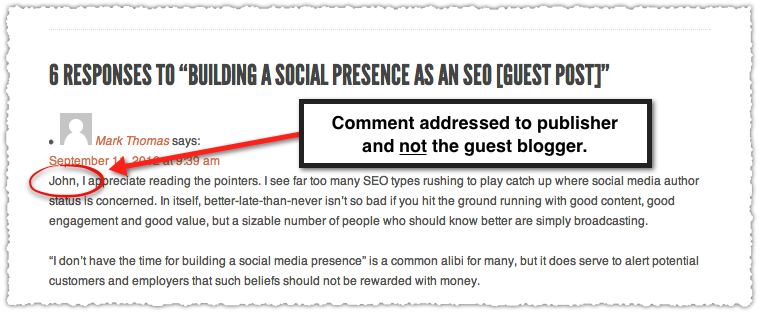
So even with prominent text telling readers it was a guest post, it seems like an engaged reader associated this content with John and not Mackensie. I don’t think this is the fault of the reader (nor John or Mack). It’s just cognitive ease at work.
That’s not to say that guest blogging can’t be part of the mix. If I didn’t make it clear before, find publishers that are in a different and complementary vertical. Content recall goes up since users are more likely to put that content in the ‘right’ room based on the unusual topic.
Even if they don’t, you don’t want a lot of competition when people are searching for or re-finding this content. It’s a lot easier to find a specific piece of content about SEO on Bloomberg than it might be on Search Engine Land.
Modified Branded Search
I’d argue that when we remember content we’re using a root modifier strategy. The root is usually what the content is about – the topic. The modifier is usually the room where you stored that memory – the author, publisher or brand. So our content searches look something like this:
“hacking Jeff Atwood”
“Old Spice viral video”
“scamworld The Verge”
You can measure content recall by looking at your modified branded search terms and traffic.
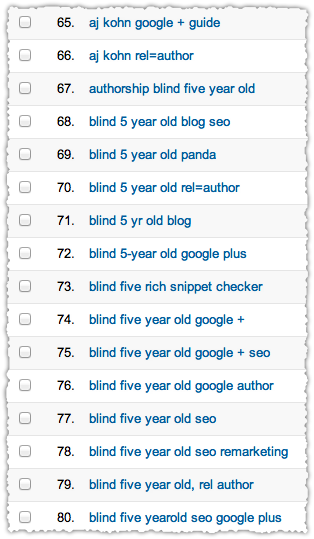
Are people remembering and associating specific content I produced with my brand? Now, mind you I’ve got some odd things going on with my name versus my brand and a brand that can include a number or a word but I’m following Tim Gunn’s advice and making it work.
Monitor these metrics when embarking on a content marketing effort. Is your modified branded search traffic going up? Are the breadth of terms in your modified branded search traffic expanding? What content (and syntax) is getting the most traction?
Memorable content leads to brand awareness.
Spontaneous Mentions
I know that content has been memorable when it is spontaneously mentioned in another piece of content. The number of Tweets, Likes, +1s and comments all show a certain amount of popularity but it’s these mentions and links that truly matter.
It’s funny how this resolves down to contextual citations, the real backbone of most search algorithms.
Of course the link is nice but it’s the knowledge that it was read, understood and remembered that counts. Your content and brand is a meme of sorts and those spontaneous mentions show how far it’s reached.
My post about the decline in US desktop search volume wasn’t particularly popular in comparison to other posts. Yet I was able to get a spontaneous mention from TheStreet. That’s pretty awesome in my book.
That’s why this focus on numbers, on the volume of Tweets or Likes, may be a false positive. That minute of fame feels good! Gamification 101 right? It’s so good you might try to replicate it again and again. But producing 15 posts that meet these numbers adds up to 15 minutes of fame and nothing more.
Track spontaneous mentions (not total backlinks) as a way to measure the strength of your content.
Fill In The Blank

Gabriel Wienberg recently put a different spin on recall.
He’s the _______ guy. That’s the _______ startup. Isn’t that the __________ search engine?
Unfortunately, the way we are wired means we generally don’t like to put more than one thing in those blanks even though most people and companies would prefer more words.
In other words, people often make poor choices of leading characteristics. They take the path of least resistance, insert their own biases, repeat hearsay, etc.
Once again we see cognitive ease at work here and the importance of recall. Are you using your content to continually play to your leading characteristic? Do you know how people are remembering your brand?
Memorable content can help ensure the right words go in those blanks.
Multi-Content Stories
A real content strategy should be about storytelling. It should promote your brand (personal or corporate), message and value proposition. Not every piece of content has to do everything at once, but together they should be moving your brand forward.
I think about each piece of content as an opportunity to tell a story and reinforce brand.
It’s not that our memory is a glitchy wetware version of computer flash memory; it’s that the computer metaphor just doesn’t apply. Roediger said we store only bits and pieces of what happened—a smattering of impressions we weave together into feels like a seamless narrative. When we retrieve a memory, we also rewrite it, so that the time next we go to remember it, we don’t retrieve the original memory but the last one we recollected. So, each time we tell a story, we embellish it, while remaining genuinely convinced of the veracity of our memories.
While this passage from Scientific American is about specific memories I think it can also apply to your memory of a person or brand. I want to ensure that each new piece of content shapes how other pieces of content are remembered and retrieved.
Because not every piece of content deserves to have the same level of recall. They’ll have different goals and meet different types of user intent. Not every piece of content has to be some epic War and Peace tome. But they should all fit your narrative and help perserve or improve the memory of the content corpus.
We’re constantly rewriting the memory of that person or brand or site. Your job is to shape memory through content.
Have A Take, Don’t Suck
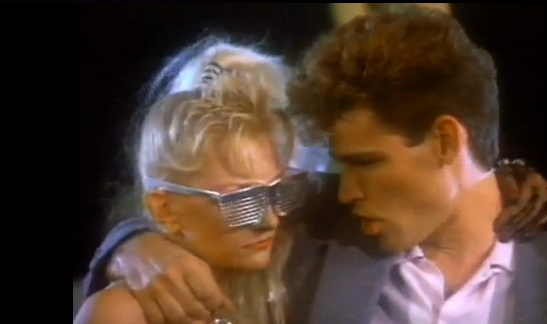
Recent posts seem to indicate that creating controversy or, at a minimum, provoking emotion is the pathway to success. To me this is focusing on the result instead of the product. The goal isn’t to make someone cry, create controversy or generate enemies.
Despite what you’ve heard, any press is not good press. Not only that, but usually those trying to force these emotions are far too transparent. (Remember, don’t feed the trolls!)
Instead, follow Jim Rome’s advice: “Have a take, don’t suck.” Have an opinion and back it up with solid reasoning and logic. Have a point of view, but make it your point of view, not someone else’s point of view or one specifically created to generate a desired reaction.
Don’t obsess about whether your content is going to elicit emotion, bring your own to the table. Create passionately not programmatically.
TL;DR
Great content is only great when it’s read and remembered. Track metrics that measure content recall so you can produce a content marketing strategy that ultimately leads to increases in brand equity and awareness.
The Next Post: Reading May Influence AuthorRank
The Previous Post: US Desktop Search Volume Declines

33 trackbacks/pingbacks
Comments About Content Recall
// 22 comments so far.
Doc Sheldon // September 19th 2012
Great stuff, Adrien! I was having a conversation about our shifting memory patterns a few weeks ago with my BIL, and we came to the same conclusion – people that spend a lot of time on line are unconsciously moving their memories online.
A handful of years ago, I knew from memory three different credit card numbers, codes and expiration dates, phone numbers and emails for more than a dozen clients, and a plethora of more mundane data. Now, I remember where I keep the encrypted file with all that information.
Never mind what a mess of mindless fools we’d all be after a high altitude EMP blast…. even without a loss of our electronic brains, I can’t believe such a shift is a step in the right direction.
As for content that’s memorable versus noticeable, I’m with you! I just don’t understand why so many people seem to be surprised to learn that old, proven marketing tenets are still valid, regardless what the medium may be.
AJ Kohn // September 19th 2012
Thanks for your comments Doc.
While not in this post, I was also influenced by Accelerando by Charles Stross which explores the idea of moving your memory and self online. We’ve already done so much of that already without realizing it. Even those keyword alerts we’ve set up are essentially parts of ourself scouring the Internet waiting for input that can then be integrated into the whole. Heady and intriguing territory for sure.
I also love your concise description: memorable versus noticeable. That’s the difference in a nutshell.
Herrin // September 19th 2012
I am surprised how few people actually confront this issue like you have in this article. The number of times I’ve clicked on one of those posts (and I’ve done them myself!) and been more confused at the end.
Essentially what they are is a list of options with no clear recommendation or solutions based on the context of use. It’s as if it’s purely a search engine exercise.
People go online looking for solutions, not more options. We know we have enough options, what we really need are people we trust with simple solutions!
AJ Kohn // September 19th 2012
Thank you Herrin! That’s a perfect description of The Paradox of Choice. More options (more choices) don’t lead to more satisfaction.
Those pieces of content that provide simple solutions (another type of cognitive ease) are far more likely to be remembered.
Patrick Hathaway // September 20th 2012
Great post AJ. It is amazing how often you see posts that preach ‘produce great content’ but are poorly formatted and do not make reading an enjoyable experience. Even if what they say is valuable, if you end up not reading much of it then it’s a bit of a waste of time.
I am quite bad at remembering to evernote/favourite articles that resonate with me, and then when I come to search from them later it is often a key memorable phrase they use or concept they introduced that I use to find it. I presume this comes under your ‘cognitive ease’ definition, and really like your rule of thumb:
‘How do you want them to describe that post to a friend? If you can’t do it in a sentence you’re in trouble.’
AJ Kohn // September 20th 2012
Thank you Patrick. Unfortunately, you’re right. I find a lot of content, even those extolling the idea of ‘great content’ that is poorly formatted. As you say, it frustrates reading which, in the end, means the content won’t be remembered. (Or might be as that piece that looked interesting but I never read.)
You’re the second person to pluck the ‘describe to friend’ phrase out of this post. It is one of my favorites. It’s one of the reasons I have my TL;DR at the end because it’s often my own task of describing what I just read succinctly.
Herrin // September 20th 2012
I keep going back to this idea that a post should deal with one thing. It should be practical in that way.
Of course you can mention context but linking to another post is a batter way, IMO to disseminate the information.
Then if you have a database driven system that can search posts for certain phrases, you can connect articles in your archive with new ones and keep the internal linking of your site in check as well.
I’ve not found a good plugin for that yet but WordPress will have something.
Another bonus of this approach is that posts can be easily collected and made into E-books or whatever, it becomes like moving pieces around until they go in the right order. again excellent article.
I love the Peter Gabriel cover BTW. 🙂
Anthony Pensabene // September 20th 2012
Whoa, this hit me hard, and has me sprinting out of the thick of the trees, back out to the tree line. I’ve recently been keeping folders labeled, ‘link building,’ ‘content,’ etc, to keep particular posts as ‘post-its,’ reminding me to break the spell of reading everything ‘anew’ every day. (This is in the content folder.)
This may be wordy-my immediate apologies.
The concept of ‘great’ content really, really irritates me. You get right at it; it’s ‘really’ more about the aftermath and not the initial reception. Moreover, it is far easier to consider what makes for horrible content, composing as far from as you can from that, rather than trying to create ‘epic content’ which belongs in the land of unicorns and ligers.
Branding warrants repetition and strategic, continuous messages. It’s better to take the ‘whole forest’ approach, as one builds the brand stone by stone, post by post. Perhaps that concept warrants an ‘editorial calendar’ approach, so one sees their brand’s/content’s trajectory.
Also, I notice Copyblogger does not place dates on his posts and often (almost daily) retweets old content. (I remember feeling ‘fooled’ at times; because, the ‘bot’ in me would not read something dated, but without some effort, it’s hard to immediately tell what’s new or old of his (unless you look at share metrics and comments).
“perceived vs. real value”- wow. It’s like (readers, please excuse me if you find my analogy crude) being attracted to the ‘hot’ girl versus the cute, kind girl; because the immediate perceived value of one’s attention seems better than the other despite what real, concrete value lies beyond initial reactions. As you recognize this can even be recognized in our own perceptions of others’ receptions of our content. Sure, I may get a lot of share love on a post for about three hours, then… Immediately, it’s intoxicating, kind of like a friend giving you a high-five for hanging out with a ‘hot girl’; but, it’s a fleeting moment. Wouldn’t it be better to secure that feeling ongoing? Yes, the intoxicated feeling is diluted when chasing long-term strategy; yet, the ongoing sentiment presents more value. (like an investment vs gambling)
The section on ‘roomnesia’ into ‘modified brand search’ blew my mind. I definitely agree with you as far as being mindful of how you’re remembered amid a guest ‘appearance.’ [Personally, I’m incorporating being a guest poster into my ‘brand’; perhaps that’s a convo we can have at a separate time.] One exception to that involving Moz, in my immediate experience, is Gianluca’s “Wake Up SEOs..” post. I still remember thinking how he (IMO) so accurately deconstruced search and predicted future trends in that one. I still, as I did here, spontaneously mention it. It got into my long-term memory. I wish I could say exactly “why” that sticks. I think it hit me like this post. It really made me stop and think. I mean, we all want to do that to our readers; but, how can we ‘best’ do it?
This post had me hunting down old Psychology texts on ‘learning and memory.’ I remember one particular class addressed ‘stories.’ The professor introduced a concept related to actually remembering core subjects as more associations are tied to it, though ‘more info’ making memory ‘easier’ seems counter-intuitive. So, like you suggest, building a brand with a story makes you more memorable, serving up more ‘cues’ to others. In business, you want all those cues to be aligned with a pre-purposed ‘brand,’ the hero/heroine of the story if you will. As you identify in the modified search section, be mindful of these supporting ‘episodes’ or ‘chapters’ taking place within the story. That’s how people are remembering and ‘reading’ your brand’s story.
I really hope other peers give this the attention it deserves. Extremely impressed and appreciative of this, AJ.
AJ Kohn // September 20th 2012
Love the comments Anthony!
I love your analogy for perceived versus real value. And I like what Doc said about being noticed versus memorable. Put together it falls on the marketing cliche of ‘all sizzle and no steak’. Sizzle is all well and good but sizzle alone won’t move you forward. Combine the two and you’re cooking with gas!
I’m fascinated with memory. Why do we remember things? How do we remember them? We often think of memory as something fixed and solid but it’s really very fluid. Memories are just stories we’ve told ourselves. And perhaps that’s why storytelling remains so powerful.
Your comment on identifying ‘episodes’ or ‘chapters’ in your modified branded search traffic is perfect. I may have to update the post to include that because that’s how it all connects. You build your brand through a story that is told in chapters and, if done right, resonate in those query patterns.
Your ‘hot girl’ vignette brings to mind that classic teen movie scene where the ‘nice girl’ transforms into a stunning beauty at the end as she saunters into the prom. Is that how building a brand is like? You toil away unnoticed until you are suddenly in the spotlight? But when you do that, you think back and see the value that’s been there all along.
Thanks again for your contributions here and I look forward to chatting soon.
Mackenzie Fogelson // September 20th 2012
AJ-
I have to say, this is one of your best yet. A couple thoughts that I had while reading your post:
[1] Content generators in the SEO community need to revisit the Matt Cutts’ interview with Eric Enge: http://www.stonetemple.com/matt-cutts-and-eric-talk-about-what-makes-a-quality-site/. What good does it do to create content that has already been said. Like you and Bill mentioned, there are 50,000 posts on 3 tricks to this, 97 tips for that and none of them are memorable. They’re all just heaped on top of each other in one saturated pile. Why would anyone link to that? If you’re going to write something, figure out what has already been said and then add value to the conversation, not just words. We’ve been guilty of not doing enough research before we decide to generate our own content. We’re so aware of it now that we are always working towards not becoming one of those posts in the pile.
[2] The thoughts on recall are really intriguing. Thing is, there are lots of memorable pieces of content out there, and many times, you can remember what it was, but you can’t remember the brand that was associated with it. The other day we were brainstorming some ideas for a client and we were talking about the Doug Pitt commercials: http://www.youtube.com/watch?v=MAyTES9gDAU. All of us thought the concept was brilliant and the content was valuable (memorable) but none of us could associated Virgin Mobile with the creative. That then leads to your point about modified brand search and being aware of that as you’re developing content and measuring your results.
All great and interesting stuff. Well done!
AJ Kohn // September 20th 2012
Thanks for the kind words and comments Mack!
I completely agree on the content creation. List posts don’t stand out in the long-run. They also often fall victim to bit rot and become outdated fast. I’m also unsure how regurgitating a product announcement from Google adds value. If you do it, you better have a big harry opinion about it at the same time.
Recall is just fascinating and is one of the things I miss from my days in advertising (both academic and professional.) Your anecdote about not connecting the content with the brand is huge. Because it’s not just that you remember it, it’s that you remember it the right way.
I remember there was a beer commercial (Bud Light maybe) which featured an NFL official. It was funny. So funny that the rival beer company (Miller Light I think) came up with a very similar ad featuring an official. They were seeking to disrupt the connection of that piece of content to the right brand. I thought it was devious and brilliant at the same time.
Patrick Hathaway // September 20th 2012
Are we working towards a blog-based remake of Shallow Hal?
Brian @ Breaking Zero // September 20th 2012
Thank you for this post.
I’ve had an internal struggle between writing great “memorable” content versus “great” marketable” content.
In my gut, I always thought doing a top list type of post was so cheesy and played out most of the time, not always of course.
But this gave me more confidence in creating content that is memorable and thus leads to a bigger impact on my audience.
AJ Kohn // September 20th 2012
Thank you for the feedback Brian. I’m glad it helped convince you to strive to be different and break from those conventions.
Bernard Tremblay (ben) // September 20th 2012
According to @ConversationAge, “a mental model is an established menu”. So, according to her (talk of “empathy” aside), we are nothing more than ball-bearings in an elaborate pachinko apparatus.
I’ll be brief: 35+yrs of dealing with my cohort has worn me down. I’m returning to my earlier readings. <Das Glasperlenspiel>, for example. (Was Knecht a fairly young man when he left the academy? I’m 58 … certainly not young … but, really, not all that old!)
The bead game is a way of recollecting together, without resigning our individuality. Quite the opposite. Despite Mlle. Maltoni’s mechanistic reductionism, the whole point is to re-visit the past without the sort of pre-established menu that so appeals to her i.e. no dead metaphors. Implicit knowledge … subjective narrative … nuance … that is the essense, the groundplane of solidarity and therefor empathy.
I’m sure she must be a successful guest; but she’s arch, because of her sad sense of human psychology.
Surely, surely this is a dark age.
thanks for your wonderful post
bernard aka @bentrem
Gordon Campbell // September 21st 2012
Great article. It wish I had written it as it would have made a great follow up to the article that I did last week.
Iain // September 21st 2012
I like the phrase ‘compelling content’. It’s much more versatile than ‘high quality content’ and probably sits quite nicely next to ‘memorable content’. I particularly love this definition of ‘compelling’: “Evoking interest, attention, or admiration in a powerfully irresistible way.”
Dali Burgado // September 24th 2012
Hi AJ,
There are definite “ah has” in here for me. I thought this post was golden and then read your response to Anthony in one of your comments above:
“You build your brand through a story that is told in chapters.”
Brilliant.
I would also add that your unique way of storytelling along with the following elements that remain consistent in each blog post you write work for you and your branding:
your TL;DR at the end of each post
your unique yellow highlighting of key points
unique photos that make readers laugh
your delivery of the content
And not only does it work for you, it helps bring your personality and strikes a chord with readers.
And thank you for that point on modified branded search. Shares some real light on whether or not the content you publish over time is working for your brand or not. That’s definitely a Key Performance Indicator (KPI) I will be adding to monitor progress over time.
All this gave me the idea that I should survey my clients and asking them what the first thing that comes to mind when it comes to my work is (since I do a lot less writing/publishing). 🙂
Dali
Lester Listman // December 15th 2014
How did Memento not get mentioned in this post?
AJ Kohn // December 16th 2014
It’s mentioned, just by image, which helps you to make another connection in your head that will help you recall the content in the future.
M. Pritchett // December 18th 2015
Your article is spot on… Even today! As a matter of fact, content is just as important today as it was back in 2012. I’ll admit, I’ve written content for SEO purposes and NOT for it to be remembered or worthy of going viral. It was basically, “Top 10 this” or “Top 7 that”… Make sure there’s a keyword here, one there… Make sure the keyword density is this much. You know the routine. lol
I took a different approach and started writing to make it memorable (as you say above) and I started getting more likes, shares and followers. It all started with me learning how to write as a copywriter and I realized headlines are very important.
Thanks for writing a memorable post.
AJ Kohn // December 21st 2015
Thanks Melvin. I’m glad you made the transition from writing text to copywriting. I know I’ve also evolved and become better at writing over time. Not only that but the medium does change and you have to adapt to ensure you’re keeping up and remain memorable.
Sorry, comments for this entry are closed at this time.
You can follow any responses to this entry via its RSS comments feed.